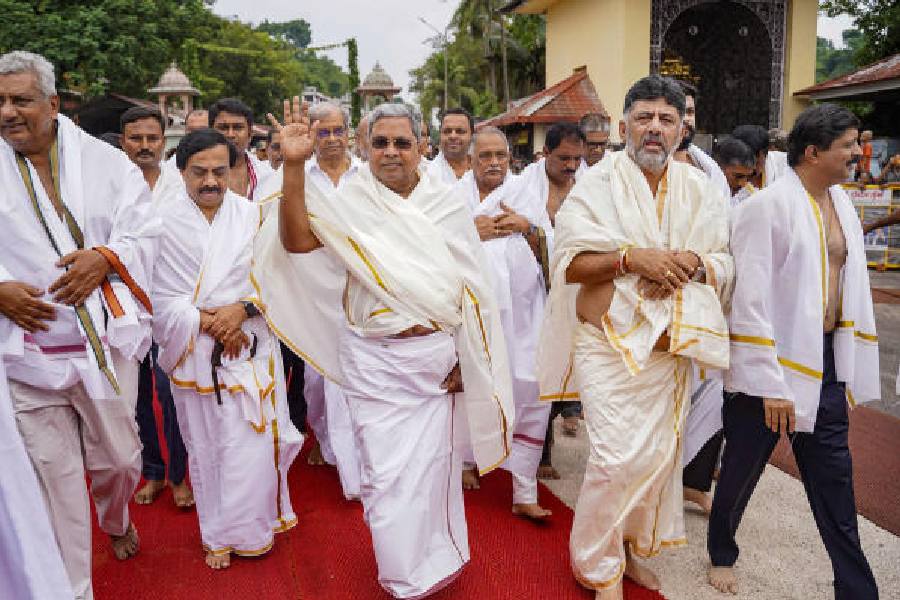
ON NATIONALISM
By Romila Thapar, A.G. Noorani and Sadanand Menon, Aleph, Rs 399
The three essays in On Nationalism convey a range of emotions regarding the ‘troubled’ times Indians are going through because of sectarian violence, corruption, inequality and ecological disasters. At its core, the volume addresses the contested phenomenon of ‘nationalism’, which has often been deliberately misconstrued and misread by those in power from colonial times to the 21st century.
In the first chapter, the renowned historian and public intellectual, Romila Thapar, traces the notion of ‘nationalism’ through history. She argues that, historically, the nation was always associated with ‘territory’. It was only after Partition that it became important for the new nation-state to define itself in terms of what constituted ‘India’. Thapar here raises a crucial point: in order to understand ‘nationalism’ one should not get into the ‘national’- ‘anti-national’ binary. Over time, the inclusive nature of nationalism gave way to dangerous and regressive ideologies which in turn prioritized one group over the other. The author airs her anguish regarding the present situation in our country where brutal assaults are being made by the Rashtriya Swayamsevak Sangh and other Hindutva groups in an effort to systematically ‘re-claim’ and ‘re-write’ history. These groups propagate the idea that the past was a ‘Hindu’ past dating from pre-colonial times and that the Hindus have been ‘victims’ for centuries — oppressed by the tyrannical dynasties of Muslim rulers. Thapar shows that such a ‘fabrication’ of history has now paved the way for aggression towards minorities, especially Muslims and Dalits. The present atmosphere in India, created by the government in Delhi led by the Bharatiya Janata Party, brings up memories of Nazi Germany of the 1930s and 1940s.
The author clarifies that Hindutva is by no means identical with ‘Hinduism’. It is an ideology, on the basis of which political mobilization was first introduced by V.D. Savarkar in 1923, and which was then adopted by the BJP in 1989. Thapar has argued that this led to the imposition of a certain tilt in school education, by virtue of which the Bhagavad Gita is being taught as the ‘national’ book. The author concludes that the ‘rights’ and ‘ethos’ spelt out by a secular society should be the foundation of any nationalist ideology. In order to safeguard the people, there is an urgent need to reassess and change oppressive laws such as that against ‘sedition’, which is being used to target all opposition, be it from students, activists, or the under-privileged. The author is still hopeful though, and says that it is the people of a secular democracy who can uphold the values of democracy and resist becoming accomplices in divisive majoritarian rule.
A.G. Noorani in his essay similarly discusses the depressing situation in India. He takes up two aspects, the law of sedition and the origins of the slogan, ‘Bharat Mata Ki Jai’, to show that these have been used systematically by the BJP under Narendra Modi to clamp down on and prosecute all opposition, wherever it may come from. The author charts, in great detail, the history of the law of sedition — Section 124A of the Indian Penal Code — through the trials of various freedom fighters from Gokhale to Gandhi, who were prosecuted by the colonial government. The major drawback of this narrative is that the author has failed to analyse critically the notion of sedition itself. Noorani has used extensive quotations of lawyers and prosecutors — rather unnecessarily — to trace the story of this draconian law. His own intervention is unclear. A more critical approach would have been pertinent in this volume. In the concluding part of his essay, Noorani discusses that controversial event of 2016 when Dattatreya Hosabale of the RSS declared that Indians must accept the slogan, ‘Bharat Mata Ki Jai’, without demur and that refusal would make them ‘anti-national’.
The last essay by the arts editor and columnist, Sadanand Menon, speaks about the need to reflect on our ‘self-implication’ in our respective nationalisms. He argues that this can be understood through two important praxes, political and cultural. Menon attempts to analyse the relationship between culture and nationalism. He indicates the ways in which a nation uses the trope of ‘culture’ to its own advantage, and points to the rabid idea of cultural nationalism in India today that has generated an atmosphere of distrust, hatred, intolerance and intimidation. The author identifies five aspects of cultural nationalism: engagement with the past, politics, gender, construction of culture and its obsession with violence. Like the other contributors to this book, Menon is optimistic that in the long run the right-wing forces in India will be defeated by united resources ranging from the power generated by electoral politics to that by cultural activism. Nationalism then has to be the site of battle between what Menon calls fascist forces and a resistance that is ‘creative’.










